MICHEL FRANÇOIS
Michel François is a multi-disciplinary artist who uses all sorts of materials and methods, combining man-made and natural objects, and photographs as well as installations. His aim is to appeal to all the senses. François’ photographs and videos are about ‘living’, and how to give form to that ‘living’. Perhaps he is a sculptor after all, in that his work oscillates between the temptation to enlarge or fill in voids – and that to hollow out or fill up volumes. “Art, in any case, is life that one sculpts.” (François)
Educated at École de Recherche Graphique (ERG), Michel François doesn’t like to limit himself to one discipline. He uses all sorts of materials and a range of methods, combining industrial and natural objects, photographs and installations, the result of which appeals to all of our senses. François analyses and refers to everyday customs and habits in an associative way without detracting from their general validity. It would perhaps be simpler to say that Michel François is a sculptor. His work is caught between the temptation to enlarge or fill in voids and the desire to hollow out or fill out volumes. As a video-maker each one of his sequences forms a transition in relation to the next sequence, and his whole output is based on his skill at isolating interludes, minor occurrences and unsuccessful, revived acts from that real time which principally consists of spare time.
Central to Michel François’ work is the personal perception of reality although he himself remains strikingly in the background, anonymously documenting the events taking place. This position can easily be seen in his videos, each one being a record of private or public life with its own particular speed and rhythm. Whether he is filming a pair of feet running on treadmills, a wooden chair endlessly falling down stairs and shattering into pieces, or falling mikado sticks, the objects depicted in quick succession do not represent commentaries, reactions or answers to political, cultural or economic questions. Being non-autobiographical in nature, neither posed nor staged, they explore cause and effect. They are experimental in nature and immediately explicable.
François intends to create a space of reflection or of self-awareness, by showing normal human occurrences as well as recognisable processes and objects. Yet at the same time he reverses things, or rather, turns them inside out. François makes inventories of the world around us by using antitheses: formal opposites such as the sculptural extremes of concave-convex and empty-full; and such opposites as freedom and imprisonment, poor and rich. Work versus free time is one of the contrasts that determine our day to day life. In his photographs and video-works Michel François does not construct his work within an autonomous, digital world but finds his subjects in the real — almost by definition anti-heroic — ordinary world. At the same time, this living context is the place in which his art is displayed. François’ images possess nothing of the unique, isolated object. His view is not attached to what has been canonised but to the liveliness of everyday life. What is registered by Michel François is the unexpected in the familiar, and the intense in the inconstant. He seems to have the quality to let the things happening around him lead a life of their own, filtering the world with respect to content and form, however, without distancing himself from his subject. François’ photographs and videos reveal themselves as paintings with restrained or openly expressed sculptural qualities. No matter how they are defined, they are qualities of his physical and emotional life that confront those of the spectator’s physical and emotional life.
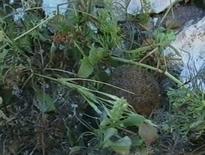
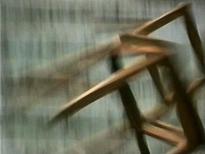
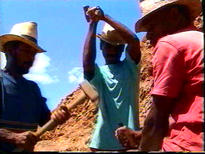
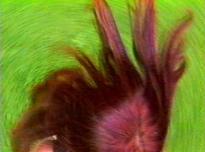
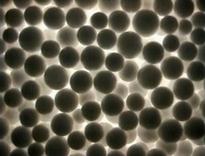
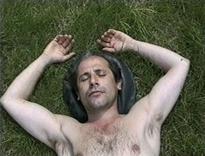
- ° 1956 Sint-Truiden (Belgium). Lives in Brussels.
-
EVENTS
- argos open lounge
- A world of objects
- STEP UP! Belgian Dance and Performance on Camera 1970-2000 - Chapter 1
- Unfamiliarised familiarities [Nuit Blanche PARIS, Public and free-acces event. Dazibao Project, Université Pierre et Marie Curie]
- Zona de mestizaje - Cine y Vídeo de Artistas Belgas
- Bits and Sparks. The videos of Michel François
- Figures of the body @ LAZNIA
- Flip-flop. Vertical bilateral symmetry in recent videowork
- Yvonne Rainer & Artists Films
- Flip Flop – Bilateral Symmetry: Mind Tricks, Virtuality and the Annihilation of the Image
- BIP 2010 / (Out of) Control 7th - International Biennial of Photography and Visual Arts in Liege
- Argos @ Mobile Institute, Brussels
- Michel François - Autoportrait contre nature
- Ciclo Vídeo Belga
- Grinding away at the boundaries. Recent videos from Belgian Visual Artists
- Art(s)kills - Argos @ Espace Ladda
- FFWD / RWD
- Volte-Face: selected videos from the Argos collection
- Video Box #1: mouvements
-
At view in the media library
WORKS- Arbre + Pluie
- Arpenteur
- Autoportrait contre nature
- CASA
- Cascadeurs (rivières)
- Casseurs de cailloux
- Casseurs d'Images 1993-2004 (part 1)
- Casseurs d'Images 1993-2004 (part 2)
- Chute d'une chaise
- Coudes
- Déjà vu (Hallu)
- Disparition d'une pelote de ficelle
- Footballeur
- Frigolith
- Mikkado
- Pianiste
- Pieds à l'Envers
- Pissenlit
- Prune tourne
- Pull Over
- Scarabée
- TBS
- Tournoiement 2
- Trou